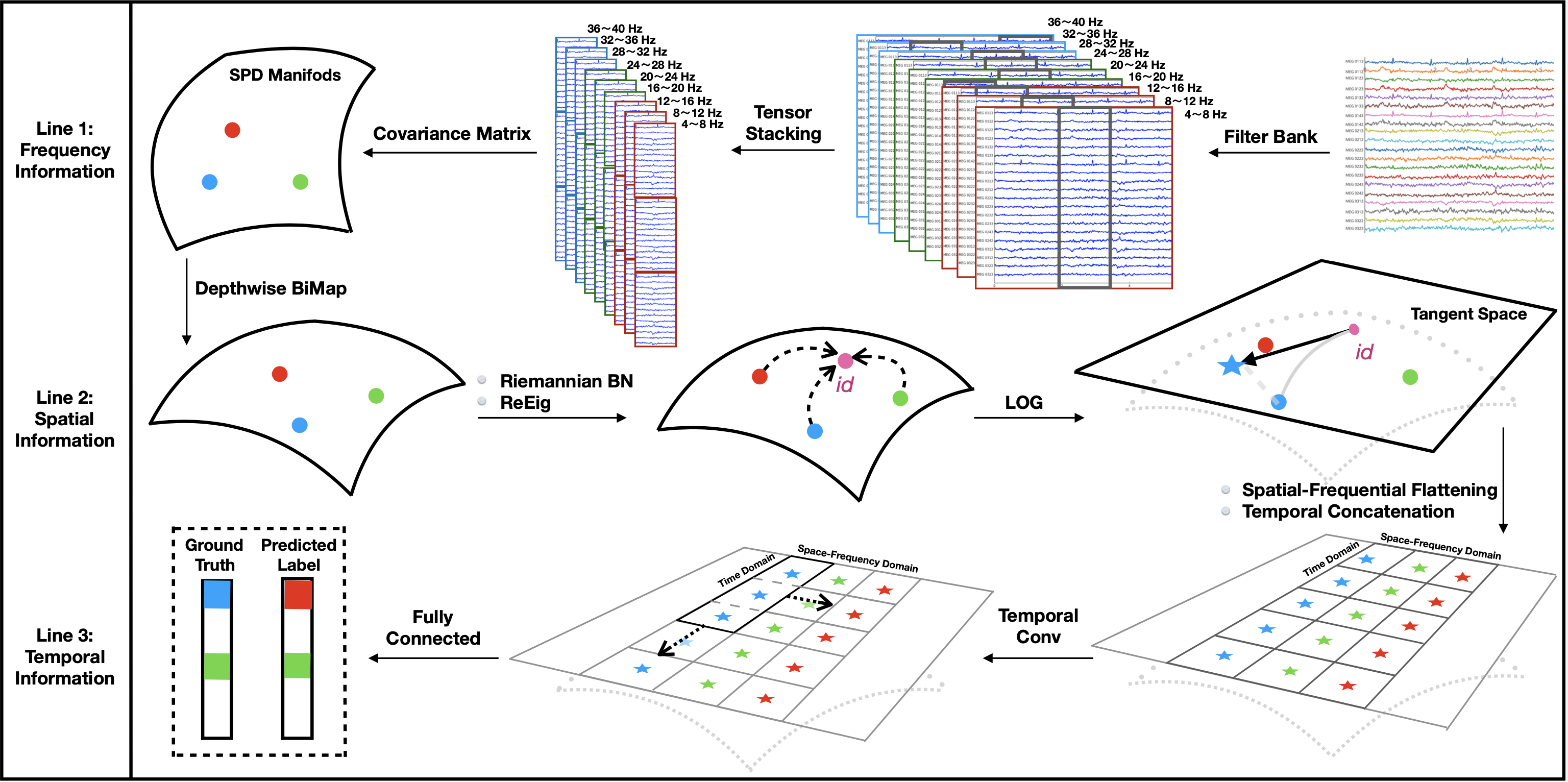Tensor-CSPNet: A Novel Geometric Deep Learning Framework for Motor Imagery Classification
Deep learning (DL) has been widely investigated in a vast majority of applications in electroencephalography (EEG)-based brain-computer interfaces (BCIs), especially for motor imagery (MI) classification in the past five years. The mainstream DL methodology for the MI-EEG classification exploits the temporospatial patterns of EEG signals using convolutional neural networks (CNNs), which have remarkably succeeded in visual images. However, since the statistical characteristics of visual images depart radically from EEG signals, a natural question arises whether an alternative network architecture exists apart from CNNs. To address this question, we propose a novel geometric deep learning (GDL) framework called Tensor-CSPNet, which characterizes spatial covariance matrices derived from EEG signals on symmetric positive definite (SPD) manifolds and fully captures the temporospatiofrequency patterns using existing deep neural networks on SPD manifolds, integrating with experiences from many successful MI-EEG classifiers to optimize the framework. In the experiments, Tensor-CSPNet attains or slightly outperforms the current state-of-the-art performance on the cross-validation and holdout scenarios in two commonly-used MI-EEG datasets. Moreover, the visualization and interpretability analyses also exhibit the validity of Tensor-CSPNet for the MI-EEG classification. To conclude, in this study, we provide a feasible answer to the question by generalizing the DL methodologies on SPD manifolds, which indicates the start of a specific GDL methodology for the MI-EEG classification.
PDF Abstract



